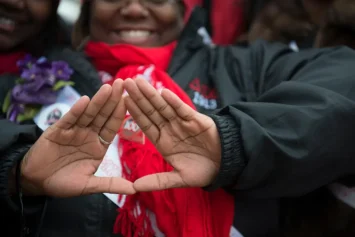After announcing that she was eliminating the competitive sports program at Spelman College, Dr. Beverly Daniel Tatum, Spelman’s president, faced a barrage of questions and criticism about the impact of the decision for the future of women sports. Organizations like the Black Women in Sport Foundation believe Spelman’s move may be counter-productive to the goal of encouraging greater participation in competitive sports by black females.
But Tatum’s decision stemmed from the prevalence of weight-related diseases at Spelman and her belief that there was minimal benefit to retaining the sports program.
Spelman decided to take money from the school’s athletic program and put it towards the construction of a new physical education building and programs to promote physical health education. Tatum’s belief is that educating young black females about healthier lifestyles would lead to a lifetime of health.
In a letter explaining this decision, Tatum calls for a “Wellness Revolution” stressing the importance of a change in behavior. Spelman’s research shows that one out of two of its students have high blood pressure, type-2 diabetes, or are obese.
Dr. Tatum states that “we were not rejecting sports, or even competition—just the limited benefit that our NCAA participation offered a few student athletes in favor of a program of activity that would support lifelong fitness for all 2,100 of our students.”
Spelman’s athletic program currently is made up of approximately 80 students playing basketball, cross country, golf, soccer, softball, tennis, and volleyball.
The President’s Council on Physical Fitness and Sports conducted a study on the physical activity of children in minority populations. It revealed that black girls are less likely to participate in physical activity than black boys and white children.
There is a fear that decisions such as Spelman’s could lead to young black girls thinking that sports are not important.
But in Tatum’s mind, since the US Department of Health and Human Services reports that black women are at a high risk for high blood pressure, diabetes, and heart disease among many other things, something more drastic needed to be done.
“A National Institutes of Health study found that by the age of 17, more than half of black girls were reporting no leisure-time physical activity at all,” says Dr. Tatum’s letter.
Still, while this initiative attempts to improve statistics on the physical activity of black women and their health, the dramatic change gives the impression that sports are not a realistic option to younger black girls. Black girls all over America aspire to attend Spelman College. If a high school student athlete is accepted to and plans on attending Spelman, they now would have to quit sports on a collegiate level, diminishing their hopes of any higher level sports participation. Spelman will no longer be an option for girls who are looking to continue to play sports in college.
The presence of black women in college sports is already low, especially when compared to white girls and boys. According to the 2009-2010 NCAA Student Athlete Race and Ethnicity report, black women make up 11.6 percent of all female student athletes compared to white 77.2. The difference isn’t as dramatic among males, where black males make up more than 18.7 percent of all athletes while white males are 70.4 percent.
One of the reasons cited for the lack of participation of black girls in sports is money. The President’s Council’s study found that “white girls had greater access to sports equipment, higher perceived safety of neighborhoods, and higher physical activity self-efficacy than black girls.”
Dr. Emmett L. Gill, Jr, an Assistant Professor at North Carolina Central University, found that “the cost associated with providing training, equipment, team fees, travel, tournament fees, and other expenses to 5,762 Black 5th grade soccer players (the ideal age to begin competing), over a seven-year period is approximately $14 million.” At almost $350 a year, this puts soccer participation out of reach for many young black girls.
Another factor noted by the President’s Council is the lack of role models for black girls, compared to white girls and especially men. Most black girls know about big stars like Lisa Leslie, Laila Ali, Venus and Serena Williams, and the newest gymnastic star Gabby Douglas, but why are black female sports superstars so scarce in a multi-billion dollar industry?
Dr. Tatum admits that “ending intercollegiate participation may seem counterintuitive,” and she remains hopeful that health education for all of Spelman will prove more beneficial to African-American women.
However, it’s not clear that this will end positively for black girls.
—Alecia Boone

